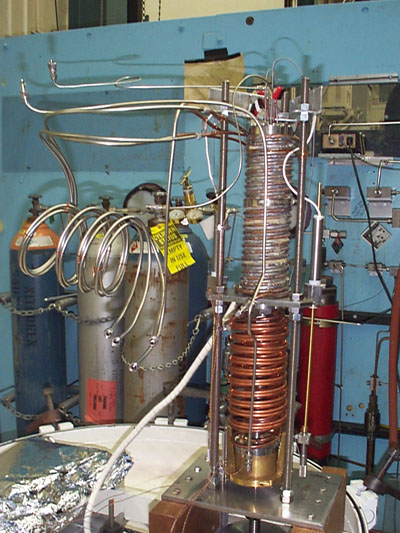 |
Not everything works the first time. Shown in the foreground of the photo is our attempt to creep solid nitrogen, with an aim toward understanding the flow of N2 glaciers and ice sheets on Triton. We got it almost right: the tubing and coils are for piping cryogens (liquid nitrogen, liquid helium) as well as for delivering the sample material itself in gaseous form. Once inside the sample chamber the gas condenses to a liquid, and is then frozen. The sample chamber is inside the creep vessel, which is basically the upper half of the coiled stack in the photo. The piston that deforms the nitrogen sample is driven by a mechanism just off the bottom of the photo. The piston passes into the sample chamber through a bellows, the part surrounded by the bright copper cooling coils that forms the bottom half of the coiled stack here. All worked perfectly, with one small oversight: the material that we chose for the pressure vessel was stainless steel, a poor thermal conductor that becomes even poorer at cryogenic temperatures. We were unable to cool much below 60 K, so we couldn't freeze the nitrogen. Someday we'll get back to replacing that pressure vessel. In the meantime, the apparatus resides in our Hall of Shame. |